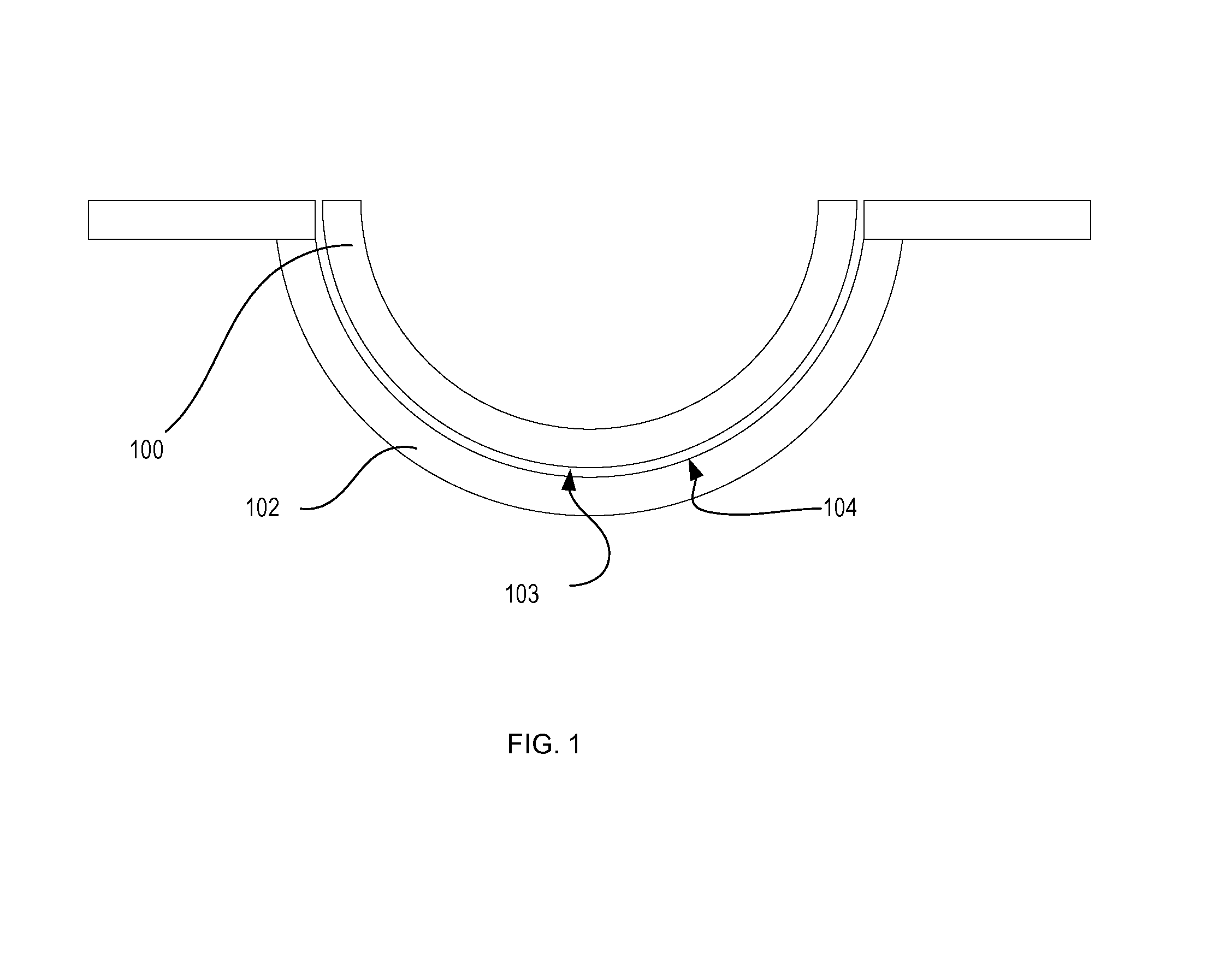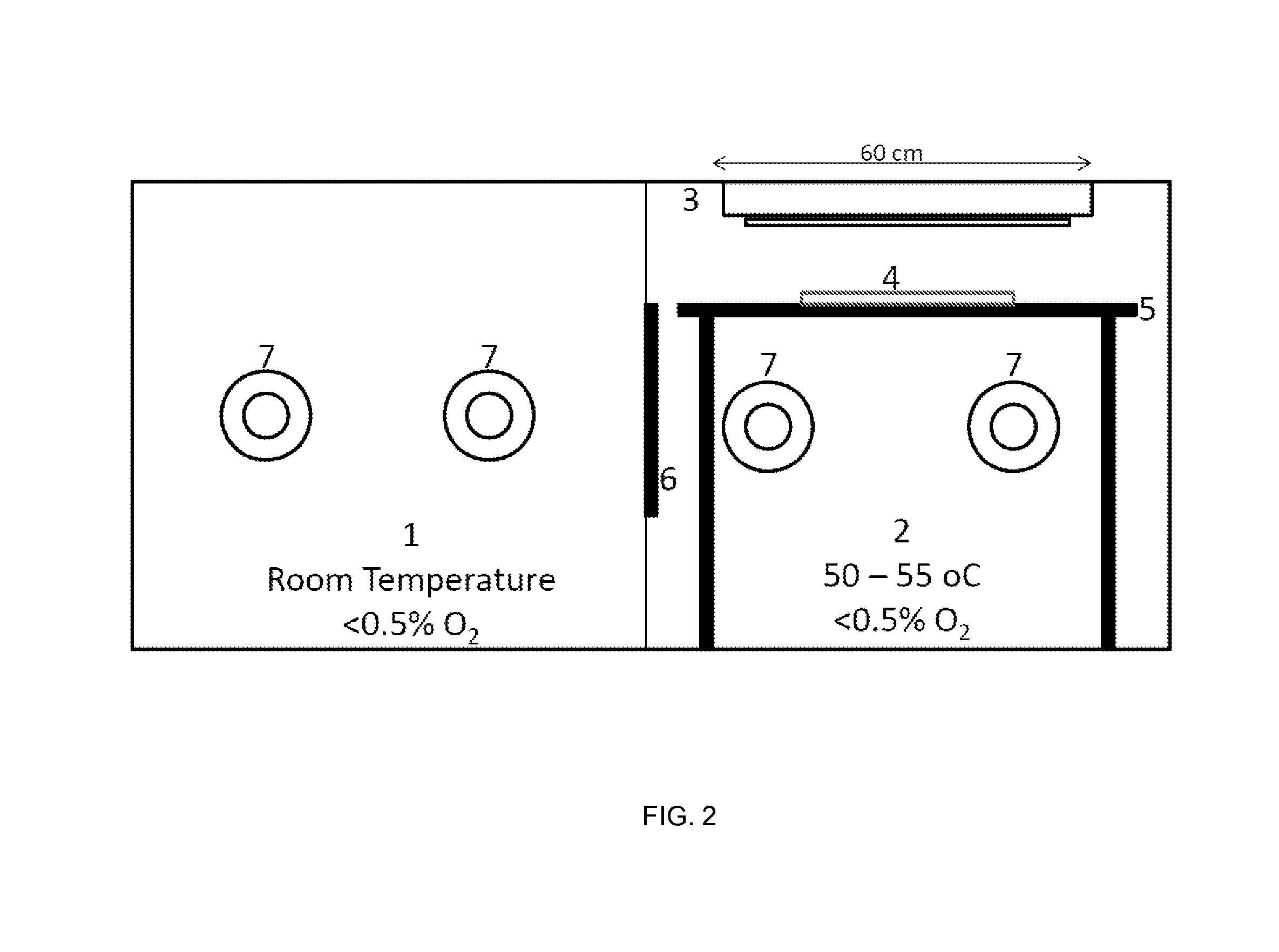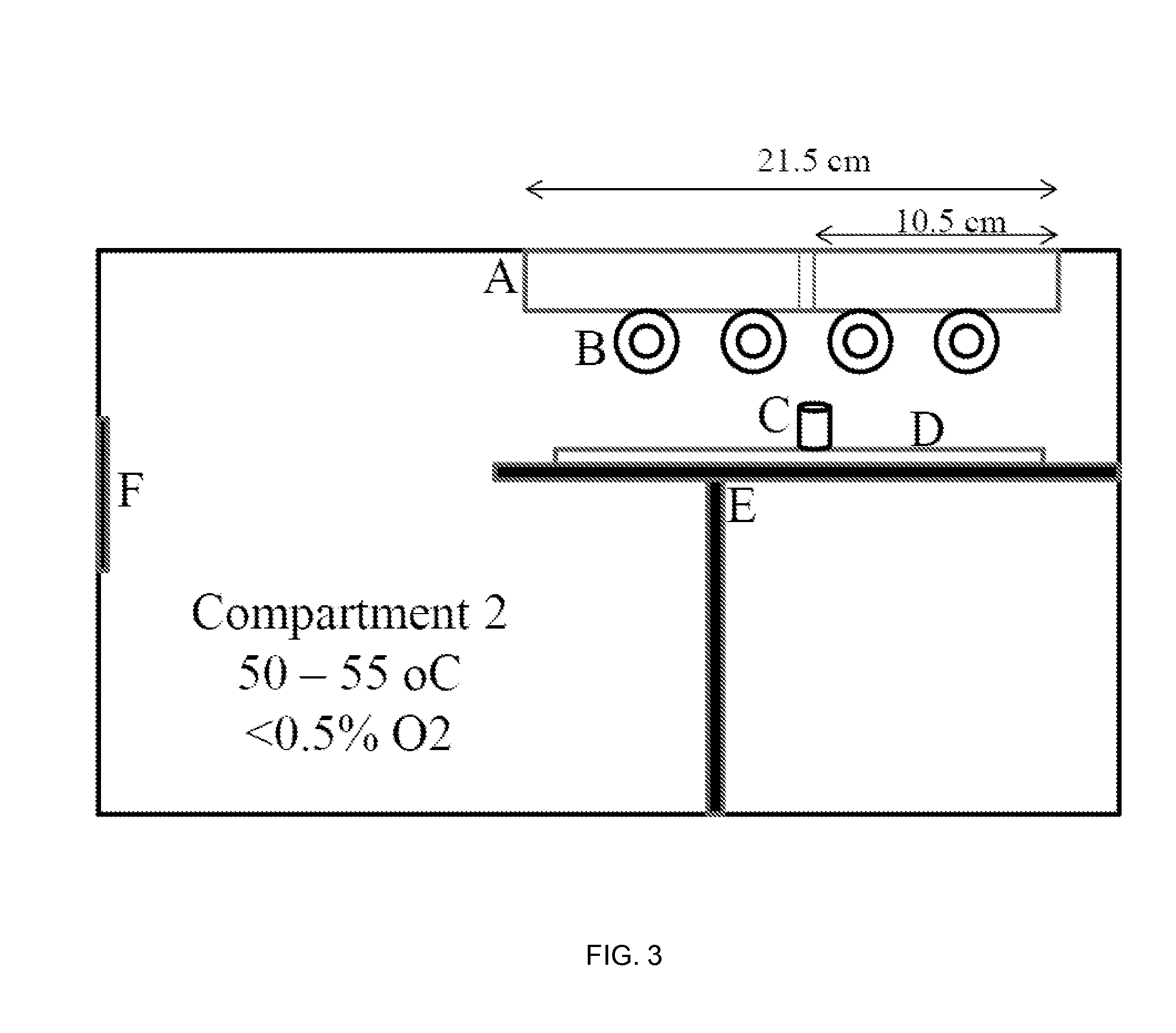Silicone hydrogels having a structure formed via controlled reaction kinetics
a technology of reaction kinetics and hydrogels, which is applied in the field of silicone hydrogels, can solve the problems of poor clarity, high modulus, hampered initial efforts to make silicone hydrogel contact lenses, etc., and achieve the effect of preventing evaporation and dehydration and increasing thickness
- Summary
- Abstract
- Description
- Claims
- Application Information
AI Technical Summary
Benefits of technology
Problems solved by technology
Method used
Image
Examples
examples 6-7
[0211]Example 1 and 2 were repeated except the amount of initiator was increased to 0.5 and 0.75%, respectively and the amount of NVP was decreased. The kinetics of each of the formulations was measured and calculated as described in Example 1, and lenses were made as described in Example 2. The kinetics results are shown in Tables 17 through 19 and the lens properties are shown in Table 19a.
TABLE 17Example 6: 0.50% CGI 819Half-lifeComponentTime PointsR2Slopek (min−1)(t½), minNVP0.25 - 6 min0.956−0.05020.11565.99HEMA0.25 - 4 min0.941−0.33570.77310.90TEGDMA0.25 - 2 min0.997−0.63481.46190.47Norbloc0.25 - 4 min0.996−0.55341.27450.54CGI 8190.25 - 4 min0.999−0.49021.12890.61OH-mPDMS0.25 - 2 min0.994−0.47201.08700.64
[0212]25
TABLE 18Example 7, 0.75% CGI 819Half-lifeComponentTime PointsR2Slopek (min−1)(t½), minNVP0.25 - 4 min0.995−0.05110.11775.89HEMA0.25 - 4 min0.930−0.37540.86450.80TEGDMA0.25 - 2 min0.976−0.63921.47210.47Norblock0.25 - 4 min0.984−0.98432.26680.31CGI 8190.25 - 4 min0.998−0...
examples 8-12
[0214]The level of BHT and initiator was varied as shown in Table 20. In Example 102 wt % VINAL, was added to the formulation of Example 8.
TABLE 20Ex#89101112[BHT] ug / g14291661661661429mPDMS 10001515151515OH-mPDMS, n = 42525252525NVP50.550.550.3850.2548.5HEMA6.756.756.756.756.54VINAL00002TEGDMA0.50.50.50.50.5Norbloc22222CGI 8190.250.250.370.50.25
[0215]The kinetics for the two formulations were measured and calculated as described in Example 1, and contact lenses were made as described in Example 2. The kinetics for the formulations are shown in Tables 21-26, and the lens properties are shown in Table 25.
TABLE 21Example 8Half-lifeComponentTime PointsR2Slopek (min−1)(t½), minNVP0.25 - 8 min0.975−0.02670.061511.27HEMA0.25 - 4 min0.993−0.20440.47071.47TEGDMA0.25 - 2 min0.947−0.31710.73030.95Norblock0.25 - 4 min0.999−0.24410.56221.23CGI 8190.25 - 4 min1.000−0.54381.25240.55OH-mPDMS0.25 - 4 min0.997−0.18850.43411.60mPDMS 10000.25 - 4 min0.997−0.15150.34891.99
TABLE 22Example 9Half-lifeComp...
examples 13-15
[0218]The preparation described in Example 1 and kinetics evaluation described in Example 2 were repeated for the formulations listed in Table 28 below. Tables 29-30 show a summary of the calculated kinetics data for Examples 13-14, and Table 31 shows the ratios of slow-reacting hydrophilic monomer to the silicone-containing component. Lens properties are shown in Table 32.
TABLE 28Componentwt %1314CE4SA2404040GMMA57.2557.250EGVE0057.25TEGDMA0.50.50.5Norbloc222CGI 8190.250.250.25Diluent (TAA)0200
TABLE 29Example 13Half-lifeComponentTime PointsR2Slopek (min−1)(t½), minGMMA0.033 - 0.5 min0.849−1.83394.22350.16TEGDMA0.033 - 0.5 min0.825−1.92974.44410.16Norbloc0.033 - 0.5 min0.834−1.82094.19350.17CGI 8190.033 - 1 min0.980−0.38880.89540.77SA20.083 - 0.75 min0.776−0.85221.96260.35
TABLE 30Example 14Half-lifeComponentTime PointsR2Slopek (min−1)(t½), minEGVE0.25 - 6 min0.944−0.01380.0317821.81TEGDMA0.25 - 1 min0.974−0.87912.024570.34Norbloc0.25 - 4 min0.990−0.41280.950680.73CGI 8190.25 - 4 min...
PUM
| Property | Measurement | Unit |
|---|---|---|
| haze | aaaaa | aaaaa |
| haze | aaaaa | aaaaa |
| water content | aaaaa | aaaaa |
Abstract
Description
Claims
Application Information
 Login to View More
Login to View More - R&D
- Intellectual Property
- Life Sciences
- Materials
- Tech Scout
- Unparalleled Data Quality
- Higher Quality Content
- 60% Fewer Hallucinations
Browse by: Latest US Patents, China's latest patents, Technical Efficacy Thesaurus, Application Domain, Technology Topic, Popular Technical Reports.
© 2025 PatSnap. All rights reserved.Legal|Privacy policy|Modern Slavery Act Transparency Statement|Sitemap|About US| Contact US: help@patsnap.com



